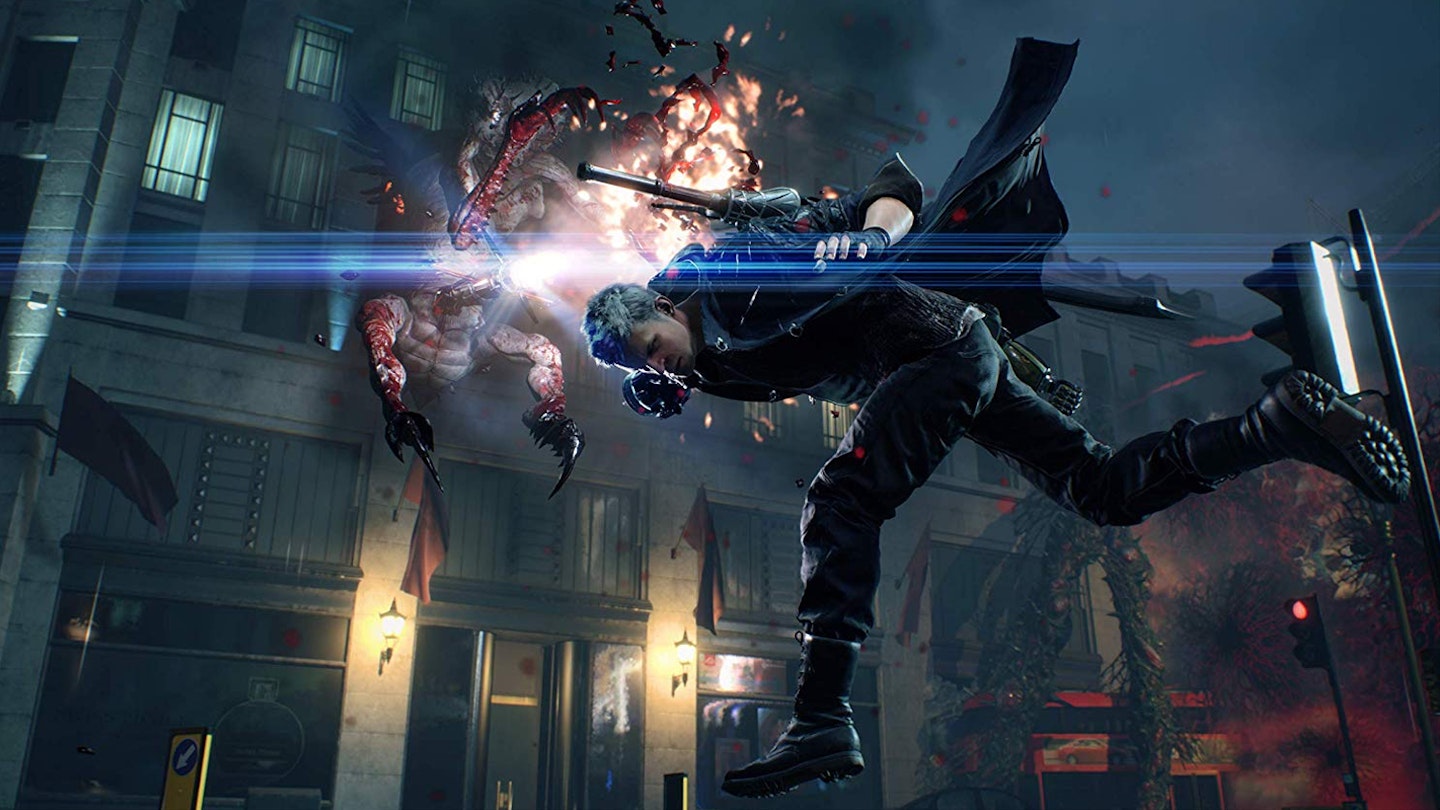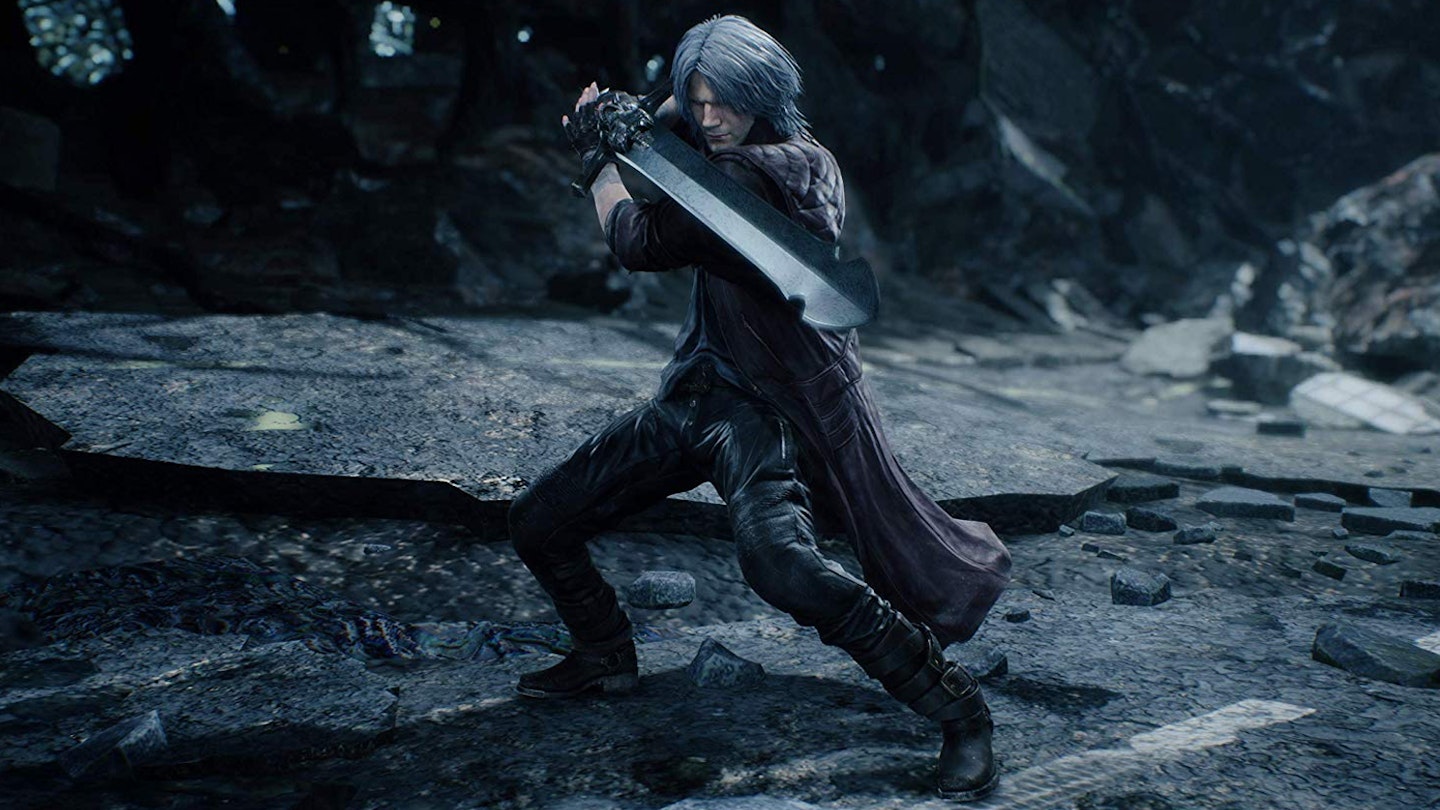Platforms: PS4, Xbox One, PC
Barely three months in, and 2019 has proven to be a nostalgia-fuelled year for Capcom. First came the re-release of PS2 classic Onimusha, then the bells-and-whistles remake of Resident Evil 2, and now comes the return of the long-dormant Devil May Cry series. However, with the demon-slaying action series having been absent the gaming sphere for over a decade – with the exception of 2013's excellent but overlooked reboot DmC – does it still hold up? Mostly, yes – but not without some caveats.
Picking up several years after 2008's Devil May Cry 4, players are thrown directly into the fray with returning heroes Dante and Nero battling the arch-demon Urizen in hell, aided by mysterious newcomer V. Matters do not go according to plan, leaving Nero and V to beat a hasty retreat, intending to return to rescue Dante when better prepared.

It's something of a flimsy set up to justify several hours of power creep as you flit between protagonists, enhancing abilities while battling your way through 'Red Grave City' – a barely-disguised London, right down to the landmarks – and tackling increasingly gruesome fiends of hell. Thankfully, DMC5's rapid-fire editing jumps from frenetic cutscenes to combat and exploration-focused missions with enough regularity to keep you entertained, without demanding too much focus on a story that never really exceeds mediocrity. While there are plenty of twists and surprising character returns that will appeal to long-standing fans who have invested themselves in the series' goofy lore, the real appeal of the series has always been its combat, and for the most part DMC5 impresses on that front. As ever, it's obsessed with style, ranking your performance in battle by how efficiently and flashily you take down enemies.
Each of the three core characters play differently, requiring different tactics. Dante remains the most familiar to the series' hack and slash roots, while Nero now has replaceable prosthetic arms called 'Devil Breakers'. These each have unique effects, some focused on ranged attacks, others on melee, but all are relatively flimsy, being destroyed each time you use a major attack. On top of these variable arms, Dante's combat style blends gunplay and swordsmanship, for a versatile approach – fitting, since he gets a bulk of the focus.
The controls suffer from a strange mix of under- and over-complication.
The strange V is the most unique though. Rather than directly battling demons himself, he summons dark familiars to do his dirty work. Griffon, a monstrous hawk creature, specialises in ranged attacks and lightning storms, while panther-like Shadow is tailored for physical, up-close blows. Deal enough pain with those two and you'll be able to summon Nightmare, a colossal golem who can deal massive damage – and sometimes destroy walls or barricades, leading to hidden areas. V himself is physically weak, but still needs to deliver the finishing blow to any enemy, lending an interesting balance to playing as him, constantly darting in and out of the fray while trying to avoid taking damage.
Whichever character a mission places under your control, DMC5’s controls suffer from a strange mix of under- and over-complication. Basically, it's all too reliant on the RB/R1 button, which seems to factor into every aspect of control. You'll generally keep it held down to target enemies, switching between highlighted foes by pressing down on the left thumbstick, but RB/R1 is also integral to dodging, special moves, and combos.
If the idea behind this control multitasking is that you'll nearly always have the button squeezed in, making chained attacks easier and – importantly – more stylish, the plan backfires. Switching from targeting into a dodge, for instance, rarely seems to work; the same for trying to launch into a dashing attack. It also creates problems with Nero's Devil Breakers – with the shoulder button held, they act as a grapple to snare enemies or drag you to them; without, they unleash their full effects, but can't be targeted at enemies.
This makes getting the highest S ranks for battles even trickier, as you end up feeling like you're button mashing rather than chaining specific moves together into a beautiful flow of demonic carnage. You can mitigate this somewhat by activating auto-assist in settings, allowing easier combos, but betraying the importance of skill. The problem is compounded by cutscenes showing the protagonists doing far cooler moves than the game itself ever allows you to do. It’s hard not to feel undersold.

Still, it does a lot right. Its design work is spectacular, with even rank and file monsters proving memorable, while bosses are some of the most deranged enemies this side of Bayonetta. Mission areas slowly grow and mutate in complexity, expanding from what initially feel like linear tunnels to expansive mazes filled with secret areas – many unlocking 'Hidden Mission' challenges which can then be replayed at will from the main menu. There's even a wealth of unlockable bonus material that will again delight returning fans.
Ultimately, Devil May Cry 5 feels cut from the same cloth as its predecessors – indeed, if not for the 4K visuals, it could easily have been released only a couple of years after the fourth game. But it doesn't take the risks that DmC did, and while that may satisfy ‘purists’ who balked at that re-imagining, it results in a game that feels fun, but unavoidably dated.
